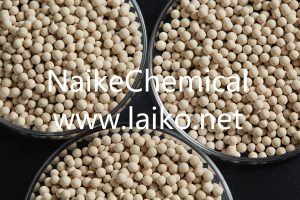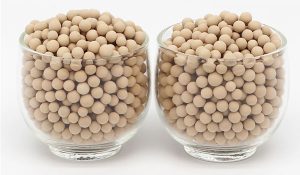Application of Activated Alumina in the Field of Adsorption and Catalysis
With a large specific surface area, various pore structure and pore size distribution, and rich surface properties, activated alumina is widely applied to adsorbent, catalyst and support. The alumina used for adsorbent and support is a kind of fine chemical, as well as the specialty one. The requirement to the structure of material property varies in accordance with the purpose, which accounts for the strong specialty and large amounts of brands of the alumina. Compared with molecular sieve, silicone, activated carbon, diatom soil and silicone aluminum, alumina is preferred to be used as catalyst or support. It can be seen that alumina plays an important role in the catalyst and support.
1. The Application of activated alumina as adsorbent
The major industrial applications of activated alumina as adsorbent include gas drying, liquid drying, water purification, selective adsorption in the petroleum industry ,chromatography and so on.
The is widely used in gas drying in virtue of its strong affinity to water. The main gases that can be dried by activated alumina are: acetylene, lysate, coke oven gas, hydrogen, oxygen, air, ethane, hydrogen chloride, propane, ammonia, ethylene, hydrogen sulfide, propylene, argon, methane, sulfur dioxide, carbon dioxide, natural gas, helium, nitrogen, chlorine, etc. The application should be designed in line with the drying capacity, drying speed, heat exchange and regeneration methods, since the activated alumina will release a large amount of heat.
The main liquids that can be dried by activated alumina desiccant are: aromatic hydrocarbons, polymer olefins, gasoline, kerosene, cyclohexane, propylene, butene and many types of halogenated hydrocarbons. When these liquids come into contact with alumina, there is no reaction or polymerization, and the dry liquid will not contain components that are easily adsorbed to the surface of alumina and are not easily removed when regenerated.
In respect of water purification, the activated alumina is mainly used to remove fluoride from drinking water, and is also effective in eliminating the color and odor of industrial sewage. Besides, the activated alumina is widely use in carbohydrate recovery and selective adsorption and maintenance of powertrain oils.
2. The application of activated alumina as catalyst and support
According to its physical and chemical property and the functional role, alumina used as a support can be classified into several types as follows:
(1) High temperature alumina support. This type of alumina is highly tolerant of high temperature and chemistry with a small specific surface area and relatively high mechanical strength, so it can adapt to the harsh operating conditions. Owing to the inertness of activated alumina,the high temperature alumina support will not be the potential source of activity which lead to side reactions and selective decline, nor will it be the potential source of toxicity to catalyst system.
(2) Interactive support. This type of alumina is the most widely used. It can interact with the reactive components of catalyst and disperse the components into the support, providing the effective specific surface and appropriate pore structure for the reactive components to strengthen the thermal stability and anti-toxic capacity of the catalyst.
(3) Coordinated or dual-functional support. This type of alumina can improve the catalytic effect of the catalyst, also effect as the skeleton of reactive components.



